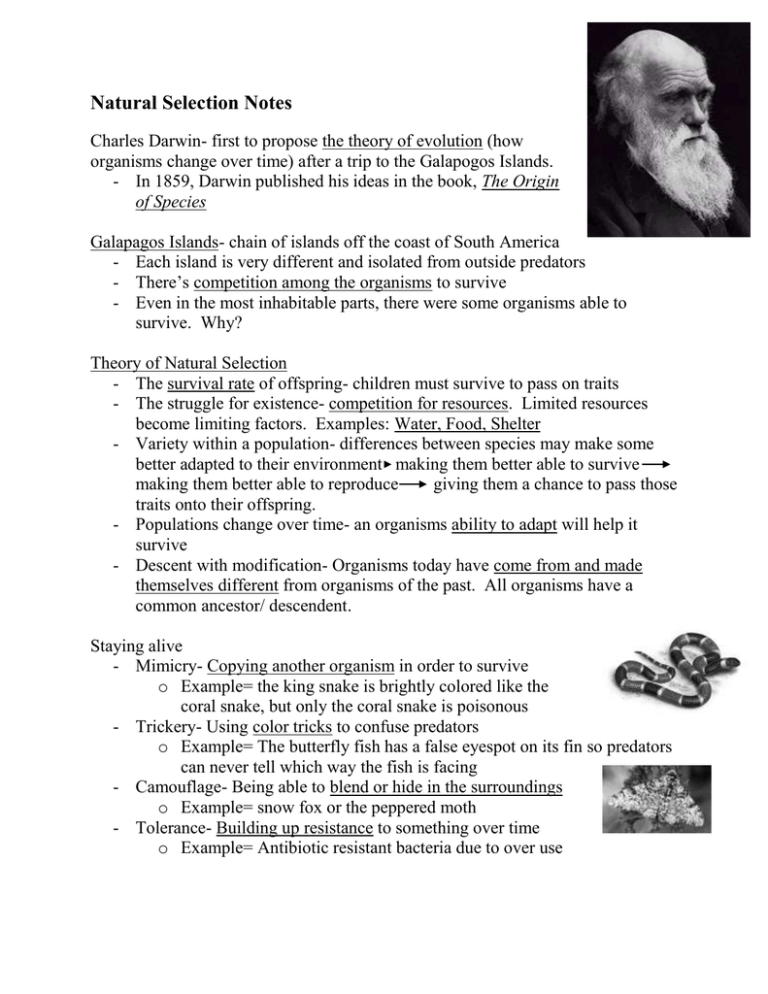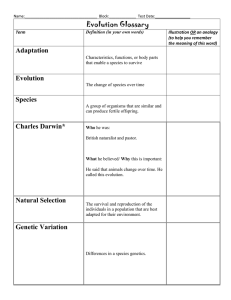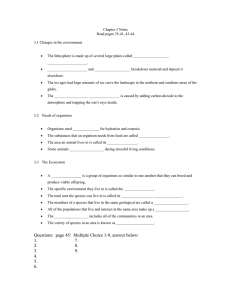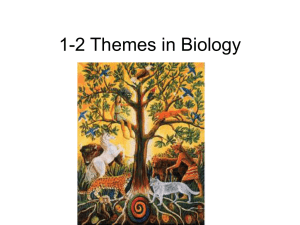Natural Selection Notes
advertisement

Natural Selection Notes Charles Darwin- first to propose the theory of evolution (how organisms change over time) after a trip to the Galapogos Islands. - In 1859, Darwin published his ideas in the book, The Origin of Species Galapagos Islands- chain of islands off the coast of South America - Each island is very different and isolated from outside predators - There’s competition among the organisms to survive - Even in the most inhabitable parts, there were some organisms able to survive. Why? Theory of Natural Selection - The survival rate of offspring- children must survive to pass on traits - The struggle for existence- competition for resources. Limited resources become limiting factors. Examples: Water, Food, Shelter - Variety within a population- differences between species may make some better adapted to their environment making them better able to survive making them better able to reproduce giving them a chance to pass those traits onto their offspring. - Populations change over time- an organisms ability to adapt will help it survive - Descent with modification- Organisms today have come from and made themselves different from organisms of the past. All organisms have a common ancestor/ descendent. Staying alive - Mimicry- Copying another organism in order to survive o Example= the king snake is brightly colored like the coral snake, but only the coral snake is poisonous - Trickery- Using color tricks to confuse predators o Example= The butterfly fish has a false eyespot on its fin so predators can never tell which way the fish is facing - Camouflage- Being able to blend or hide in the surroundings o Example= snow fox or the peppered moth - Tolerance- Building up resistance to something over time o Example= Antibiotic resistant bacteria due to over use Fossil Evidence- Darwin collected fossils to see how organisms changed over time: - Homologous structures- similar physical structure (make-up), but with different uses o Example= Bat wings, whale flippers, human hand, and dog’s paw - Analogous structures- similar function, but different in physical structure (make-up) o Example= Butterfly and bat wings - Vestigial organs- organs that remain but no longer have a function (job) (may be reduced in size) o Example= appendix, eyes of cave dwelling organisms, pelvic bones of whales and dolphins - Embryology- study of how organisms develop. Focuses on the similarities during development even though the adults look different





